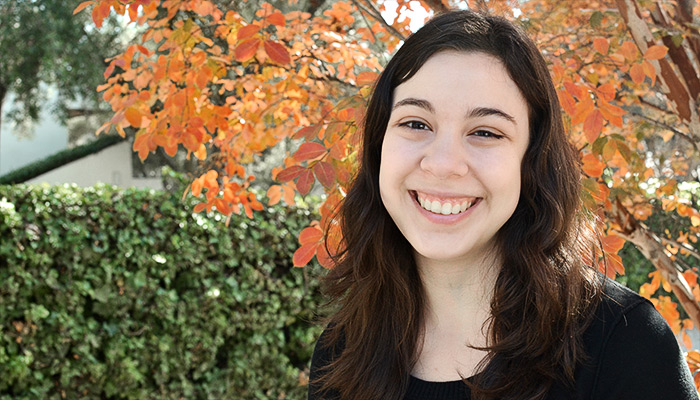Maddy Ruvolo ’14 has dysautonomia, an autonomic nervous system disorder that left her bed-ridden throughout much of high school. But she’s refused to let it slow her down – and now Ruvolo pioneers disability advocacy at Scripps College, The Claremont Colleges, and beyond.
“As a first year, disability felt like something personal and private I should deal with by myself, instead of an identity to be explored,” the American studies major says. “It rarely comes up in classes or in casual conversation and I think having a resource center will promote discussions about ableism and encourage a campus culture that celebrates disability.”
The center she’s speaking of is the 5C Student Disability Resource Center (SDRC), scheduled to open in fall 2014 in part because of Ruvolo’s work in the community. And it’s not her first step in raising awareness of disability in Claremont; in April 2012, Ruvolo cofounded The Claremont Colleges Disability Illness and Difference Alliance (DIDA), which she continues to run as president. DIDA facilitates weekly discussions for disabled students and their allies and hosts events between students and administrators to advocate for changes, and SDRC’s future director will serve as its advisor.
Ruvolo is quick to point out that not all disabilities are visible; for many, it’s not immediately obvious that a person can suffer fatigue and pain. Alerting people to the many different types of disability is an important goal.
“Meeting other disabled students through DIDA has been fantastic,” she says. “There’s an immense comfort when you feel like people really understand you, and that’s what I’ve found in the budding disability community at the 5Cs. It’s a feeling I hope the SDRC will nourish.”
Ruvolo’s advocacy extends beyond Scripps as well; last summer, she also participated in an internship with the American Association of People with Disabilities (AAPD) in Washington DC. Through this program, Ruvolo worked with Representative Alan Grayson (D-FL) researching and drafting constituent response letters focused on healthcare issues and partnered with fellow interns to create a photo project representing the lives of disabled persons.
“If you look for depictions of disabled folks in the media, you are likely to come across one of two portrayals: the bitter, evil disabled person or the Super Crip, who is portrayed as ‘inspirational’ in the most dehumanizing way possible,” she says. “The goal of this project was to give people another view, to show you what our lives are actually like.”
Ruvolo hopes the SDRC will have a similar impact at the 5Cs, where approximately six percent – or more than 400 students – have self-identified as having a disability. Starting next fall, the SDRC will be located in the Robert E. Tranquada Student Services Center. A search for its director is underway, and Ruvolo is an active participant.
“DIDA has been pushing for a more cultural angle to the center,” Ruvolo says. “I hope it will be a platform for change.”


